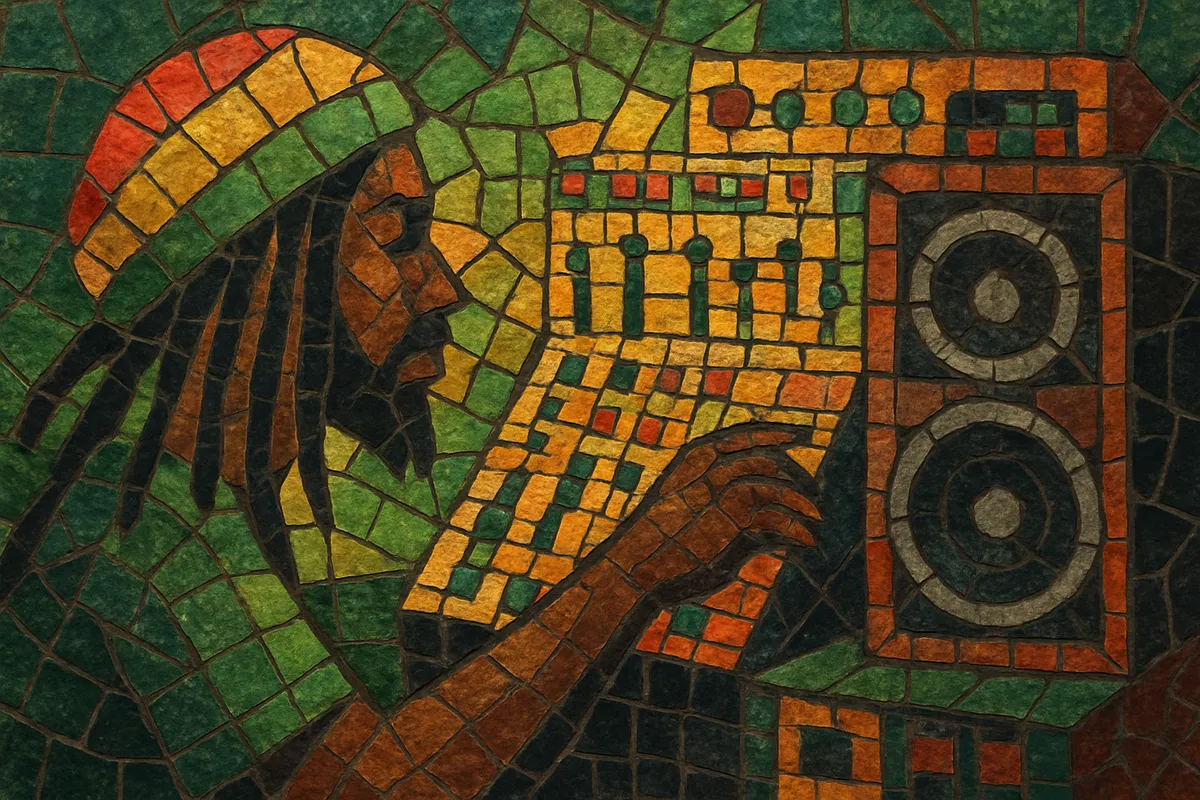Dub is a studio-born offshoot of reggae that uses the mixing desk as a performance instrument. Producers strip songs down to their rhythmic core—drums and bass—and then rebuild them in real time with radical mutes, echoes, reverbs, and filters.
Typically created from the B-sides (“versions”) of reggae singles, dub foregrounds spacious low-end, one-drop or steppers drum patterns, and fragmented vocal or instrumental phrases that drift in and out like ghostly textures. Spring reverb, tape echo, and feedback are not just effects but compositional tools, turning the studio into an instrument of improvisation.
The result is bass-heavy, spacious, and hypnotic music that emphasizes negative space and textural transformation, laying the foundation for countless electronic and bass music styles.
Dub emerged in Jamaica when sound system engineers began pressing instrumental “versions” of reggae tracks for DJs to toast over. Pioneers like King Tubby and Lee “Scratch” Perry transformed these versions into new works by muting elements, emphasizing bass and drums, and employing spring reverbs and tape delays as creative instruments. Early landmarks include King Tubby’s mixes for producer Bunny Lee and Augustus Pablo, culminating in the seminal 1974 single “King Tubby Meets the Rockers Uptown.”
Throughout the 1970s, dub matured into a distinct art form. Engineers such as Errol Thompson (often with Joe Gibbs), Scientist, and Prince (King) Jammy refined live, hands-on mixing: riding faders, sending snare hits into cavernous springs, and feeding echoes back into themselves for evolving textures. Lee Perry’s Black Ark studio became a laboratory for saturated tape sonics, found sounds, and psychedelic ambience. Dub albums and version flips became standard practice in Jamaican music.
As Jamaican diaspora communities grew, dub took root in the UK. Producers like Mad Professor and Dennis Bovell cultivated a British dub tradition that intertwined with post-punk, experimental rock, and spoken-word “dub poetry.” Meanwhile, studio techniques from dub directly informed dancehall’s sound design and helped shape early hip hop’s emphasis on the DJ/engineer as an artist.
Dub’s approach to bass weight, spatial design, and real-time mixing seeded numerous genres: jungle, drum and bass, trip hop, dub techno, ambient dub, and dubstep (and later post-dubstep). Its live-desk performance ethos continues in modern electronic music, while contemporary artists—both in roots scenes and experimental clubs—still use dub’s core ideas: subtraction, space, and the creative misuse of effects.
Start from a reggae rhythm track and treat the studio or DAW as your instrument. Composition happens through subtraction (muting) and transformation (effects), not dense arrangement.


